
The Free Presbyterian Church of Scotland was formed in 1893. The Church identifies itself as the spiritual descendant of the Scottish Reformation. The Church web-site states that it is 'the constitutional heir of the historic Church of Scotland'. Its adherents are occasionally referred to as Seceders or the Wee Wee Frees. Although small, the church has congregations on five continents.
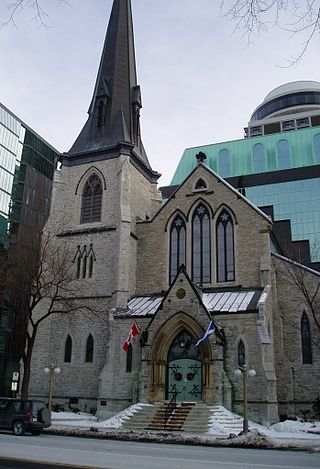
St. Andrew's Presbyterian Church is the oldest Presbyterian church in Ottawa, Ontario, Canada.

The Presbyterian Church in Canada is a Presbyterian denomination, serving in Canada under this name since 1875. The United Church of Canada claimed the right to the name from 1925 to 1939. According to the Canada 2021 Census 301,400 Canadians identify themselves as Presbyterian, that is, 0.8 percent of the population.

Knox Presbyterian Church is a Presbyterian Church in Ottawa, Ontario, Canada. It is named after John Knox, a founder of Presbyterianism in Scotland.

St. Matthew's United Church is a United Church of Canada church in downtown Halifax, Nova Scotia. The church was founded at the same time as the original colony in 1749 as a home for the various groups of dissenting Protestants who were from New England and who did not follow the Church of England. It originally met Sunday afternoons in St. Paul's Church, the Church of England building completed in 1750. The church got its own home in 1754 when a church was constructed at Hollis and Prince streets. This building was destroyed by fire in 1857, and a new church was built at the current location at 1479 Barrington Street, land parcelled off of the Black-Binney House estate by Bishop Hibbert Binney. The church used the Old Burying Ground.

St. Andrew's Church is a historic Presbyterian church located at the corner of King Street West and Simcoe Street in the city's downtown core of Toronto, Ontario, Canada. It was designed by William George Storm in the Romanesque Revival style and completed in 1876.

Grace Toronto Church is a Presbyterian Church in America congregation worshipping in the historic Old St. Andrew's Church building at 383 Jarvis Street in Toronto, Ontario, Canada.

Knox Presbyterian Church is a Presbyterian church in downtown Toronto, Ontario, Canada.
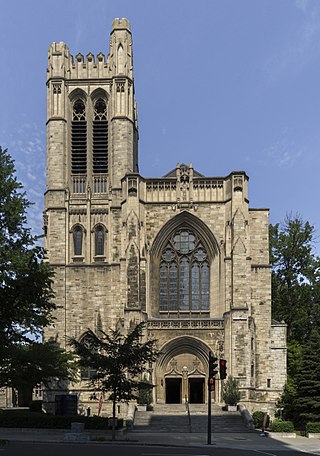
The Church of Saint Andrew and St Paul is a Presbyterian church in downtown Montreal, Quebec, Canada. It is located at 3415 Redpath Street, on the corner of Sherbrooke Street. It is in close proximity to the Golden Square Mile, the Montreal Museum of Fine Arts, Concordia University as well as the Guy-Concordia Metro station.
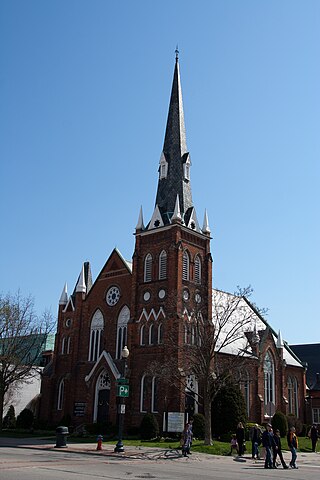
Knox Presbyterian Church, Oakville is a Presbyterian Church in Canada congregation, and located at 89 Dunn Street at Lakeshore Road in downtown Oakville, Ontario, Canada.

Edinburgh: The New Town Church of Scotland serves Edinburgh's New Town, in Scotland. It is a congregation of the Church of Scotland, formed on 1 February 2024 by the union of St Andrew's & St George's West and Greenside Church.

The Queen's University Faculty of Law is a professional faculty of Queen's University at Kingston in Kingston, Ontario, Canada. According to the 2013 Maclean's Magazine Law School Rankings, Queen's is tied for third among law schools in Canada.
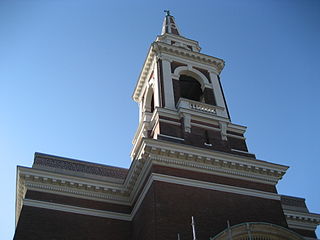
Central Presbyterian Church is a Presbyterian Church in Canada congregation in Hamilton, Ontario, Canada, located in the downtown area at the corner of Charlton and Caroline Street South.

Brown Memorial Park Avenue Presbyterian Church of Baltimore, Maryland, U.S., is a large, Gothic Revival-style church built in 1870 and located at Park Avenue and Lafayette Avenue in the city's Bolton Hill neighborhood. Named in memory of a 19th-century Baltimore financier, the ornate church is noted for its exquisite stained glass windows by artist Louis Comfort Tiffany, soaring vaulted ceiling, and the people associated with its history. Maltbie Babcock, who was the church's pastor 1887–1900, wrote the hymn This is My Father's World. Concert performer Virgil Fox was organist at Brown Memorial early in his career (1936–1946).

St. Andrew's Scots Church, sometimes known as the Church of Scotland, is a 19th-century church in Valletta, Malta. The church was built to the neo-Gothic design of Maltese architect Giuseppe Bonavia. It is still an active church today, as a joint congregation of the Church of Scotland, as part of the Presbytery of Europe, and the British Methodist Church South-East District.

St. Andrew's Scots Kirk, is located at 73 Galle Road, Colombo. The church was founded in the late 19th century, and prospered during the colonial and post-colonial periods. It was the centre for the Scottish community in Colombo.
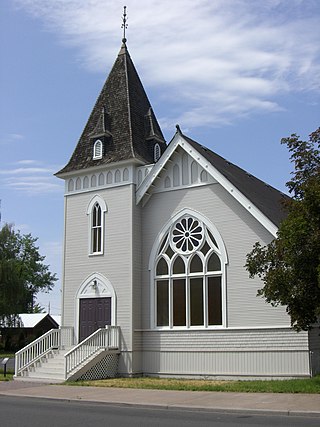
Built in 1912, the First Presbyterian Church of Redmond is the oldest standing church structure in the city of Redmond, Oregon, United States. It is also the second-oldest religious building in Deschutes County. The church was built in the Gothic Revival style with Queen Anne architectural detailing. It was the home of Protestant congregations from 1912 until 1979. Today, the building is privately owned and used as a special events venue. The First Presbyterian Church of Redmond was listed on the National Register of Historic Places in 2001.

St. Mary's Cathedral in Kingston, Ontario, Canada is a Roman Catholic cathedral. It is one of three churches located within 600m along Clergy Street. It is one of two cathedrals in Kingston, the other being the Anglican St. George's Cathedral on King Street.

First Presbyterian Church is a historic church at 213 Main Street in Clarksville, Tennessee. The congregation is currently affiliated with the Presbyterian Church (USA).
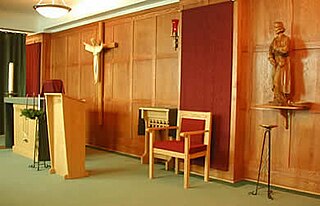
In 2013, the Royal Military College of Canada is celebrating the 50th anniversary of the two small devotional chapels in Yeo Hall, which were installed in 1963. With a view to encourage and enhance their spiritual well-being, the Protestant and Royal Catholic Chaplains, cadets and staff use the Chapels. Gifts to the chapels have been made by successive generations of cadets and ex-cadets.






















